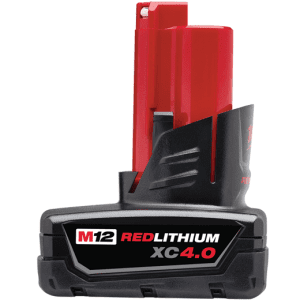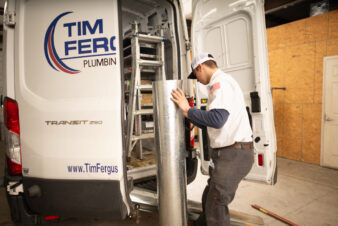 Cordless tools have nearly taken over the new construction and remodel jobsite entirely. With advancements like battery capacity, runtime and motor efficiency with onboard discharge monitoring today’s cordless tools are routinely performing at or above the level of production and power than their corded predecessors.
Cordless tools have nearly taken over the new construction and remodel jobsite entirely. With advancements like battery capacity, runtime and motor efficiency with onboard discharge monitoring today’s cordless tools are routinely performing at or above the level of production and power than their corded predecessors.
Sure, everyone has said it myself included; there’s really no need to lug an extension cord onto the job today. As old tools have reached the end of their useful and productive lifespan most are definitely being replaced with battery powered “upgrades”. As we all know not all tools are created equal the same should be said, and more often, about their power source; the battery.
With the multitude of choices in the cordless tool market I’m going to focus on one single platform to keep the message clear. I’m not choosing one brand over another out of preference or performance; my focus here is battery identification and what exactly we should be looking at to make the best purchasing choices with our hard-earned money.
Today’s manufacturers have invested entirely in lithium ion battery cell technology, long gone are the NiCad batteries of yesterday and to that I say good riddance. For the purpose of this article I’ll be using Milwaukee Tool’s M12 batteries in attempt to explain the differences in capacity and how to identify the right battery for your tool.
First, let’s get this out of the way, tool manufacturers in North America have long dropped the facts for the sake of marketing in labeling their tools lines. The 12V, 18V, 20V and 60V batteries produced by the major tool companies are all overrated in name and labeling. I’m not exactly sure why a 10.8V battery is labeled as a 12V but I’d guess it has more to do with the expected performance than graphics on packaging and more to do with 12 simply being the bigger number. Regardless, 60V [actually 54V] is the current king because it’s the biggest, right? We’re trained to think “bigger is better” and they’ve played into that 100%.
While it should go without saying that a typical 12V battery tool has less potential than its 18V bigger brother that’s not always the case for multiple reasons, one of them being the Ah [Amp Hour] ratings of the battery packs.
Runtime, potential power, voltage delivery etc are all tied back to or are related to this significant and often overlooked rating. The science behind the Ah is simple; a battery rated at 1Ah should be able to continuously supply a current of 1 amp to a load for exactly 1 hour, or 2 amps for 1/2 hour, or 1/3 amp for 3 hours, etc., before becoming completely discharged.
In an ideal battery, this relationship between continuous current and discharge time is stable and absolute, but real batteries don’t behave exactly as this simple linear formula would indicate. Therefore, when amp-hour capacity is given for a battery, it is specified at either a given current, given time, or assumed to be rated for a time period of 8 hours (if no limiting factor is given). Sometimes to understand the Amo Hour we need to also work with the Watt Hour [Wh]…just to further complicate things a little.
Let’s take for example the standard, lowest capacity M12 battery from Milwaukee. This battery is rated as 14 Wh [Watt Hours). Some simple math can convert Wh to Ah with this formula: (Wh)/(V) =(Ah). And you thought you left that back in 8th grade… When calculated out the Ah rating for this example is 1.1666 Ah. Meaning this pack should delivery 12V at 1A for slightly more than an hour. Of course when placed under higher or lower load conditions performance will change.
Milwaukee offers M12 batteries of multiple Ah ratings of course, as do other manufacturers but there seems to be different ideas on how to label these batteries so knowing how to identify the capacity will help you make an informed decision.
Moving up the M12 battery line the next offering is rated 16Wh and when plugged in to the formula we find out it’s a 1.333 Ah pack. That’s not a significant jump in power potential, a few minutes really but it comes at a price at the register. Moving even further up the M12 line takes us to a more recent product in the 2.0Ah labeled pack. It’s a 22Wh pack and has theoretically twice the capacity of the first two discussed so far.
Recent advancements in lithium cell technology, along with manufacturing processes have brought along even larger Ah capacity batteries of all voltages, not just the 12V batteries used for example here. As capacity increases so does the physical size to a point, further advancement of heat dissipation and cell quality is underway making it possible to assemble battery packs that are actually more powerful and physically smaller or the same size as lower rated packs.
 A perfect example is the M12 XC 4.0Ah and M12 XC 6.0Ah battery packs. Both are the largest in physical size of all the Milwaukee 12V batteries but identical in size to each other. This is due to the type of lithium cells used in manufacturing and how those individual cells are assembled inside the rugged exterior shell. Quick math would show that the 6.0Ah pack has the potential runtime of almost 600% more than the 14Wh M12 pack. That capacity rating comes at a cost of course but in staying with the “bigger is better” philosophy you will definitely be getting longer runtime and possibly more bang for your buck.
A perfect example is the M12 XC 4.0Ah and M12 XC 6.0Ah battery packs. Both are the largest in physical size of all the Milwaukee 12V batteries but identical in size to each other. This is due to the type of lithium cells used in manufacturing and how those individual cells are assembled inside the rugged exterior shell. Quick math would show that the 6.0Ah pack has the potential runtime of almost 600% more than the 14Wh M12 pack. That capacity rating comes at a cost of course but in staying with the “bigger is better” philosophy you will definitely be getting longer runtime and possibly more bang for your buck.
Knowing what Wh and Ah really means and using that to compare one battery to another will hopefully help you select the best value for your cash and at the end of the day we all share the common goal of getting the most out of our time and money. Hope this helps.




Join the conversation: